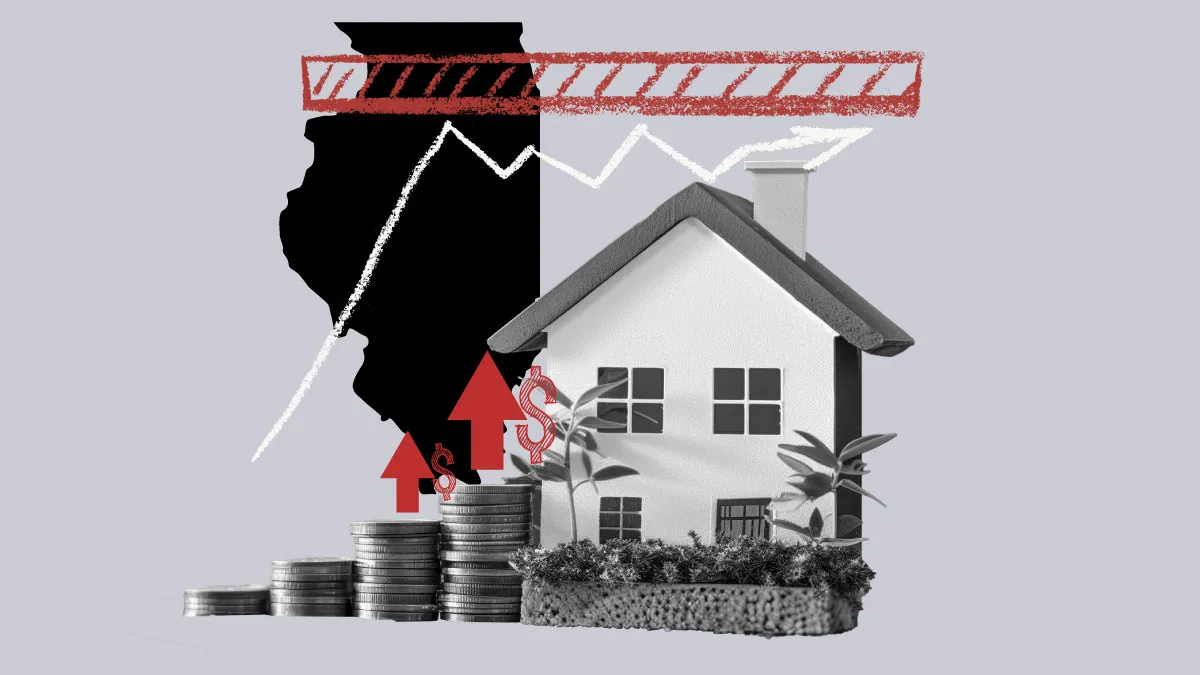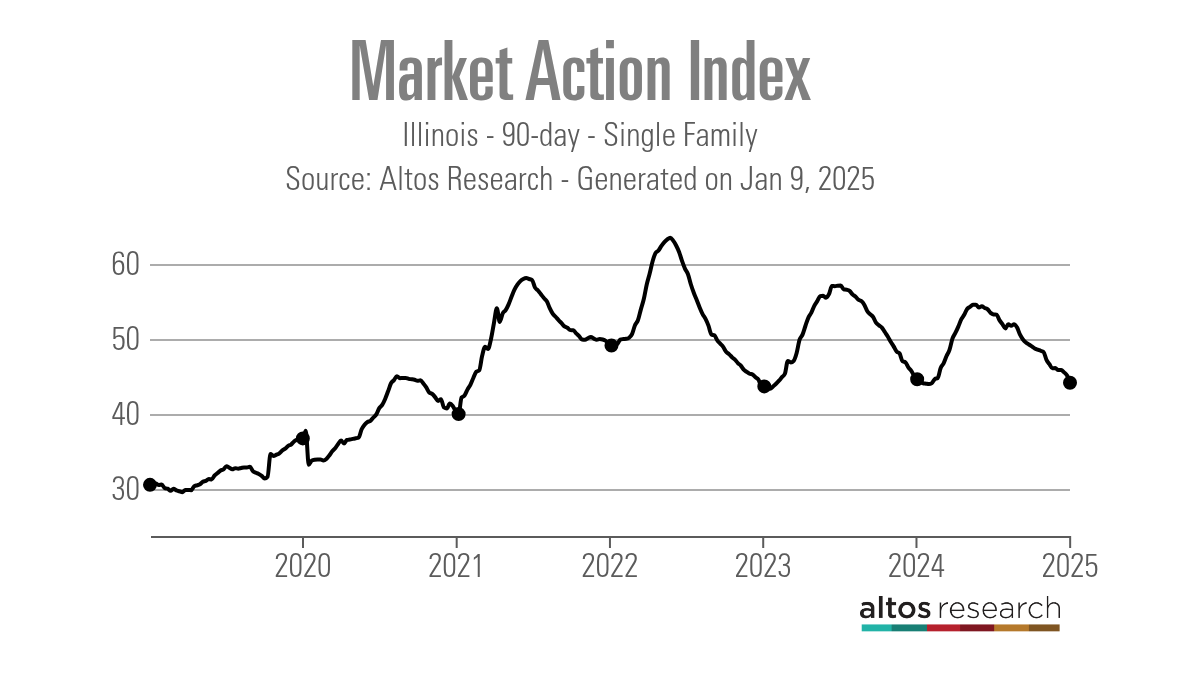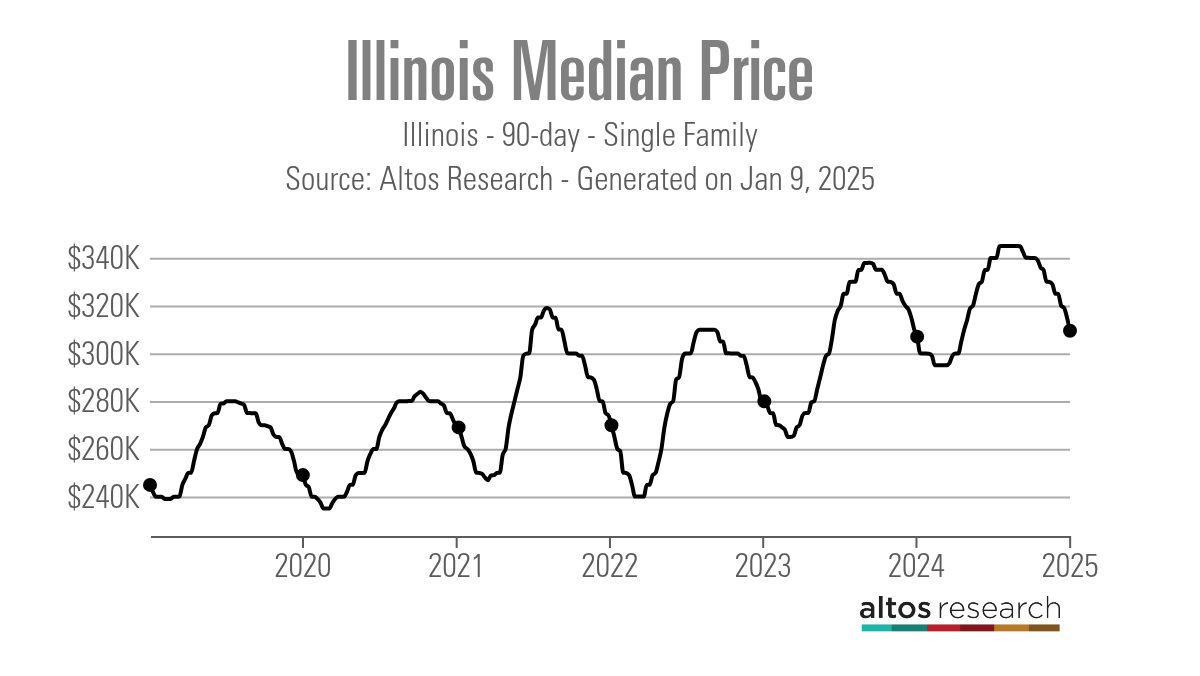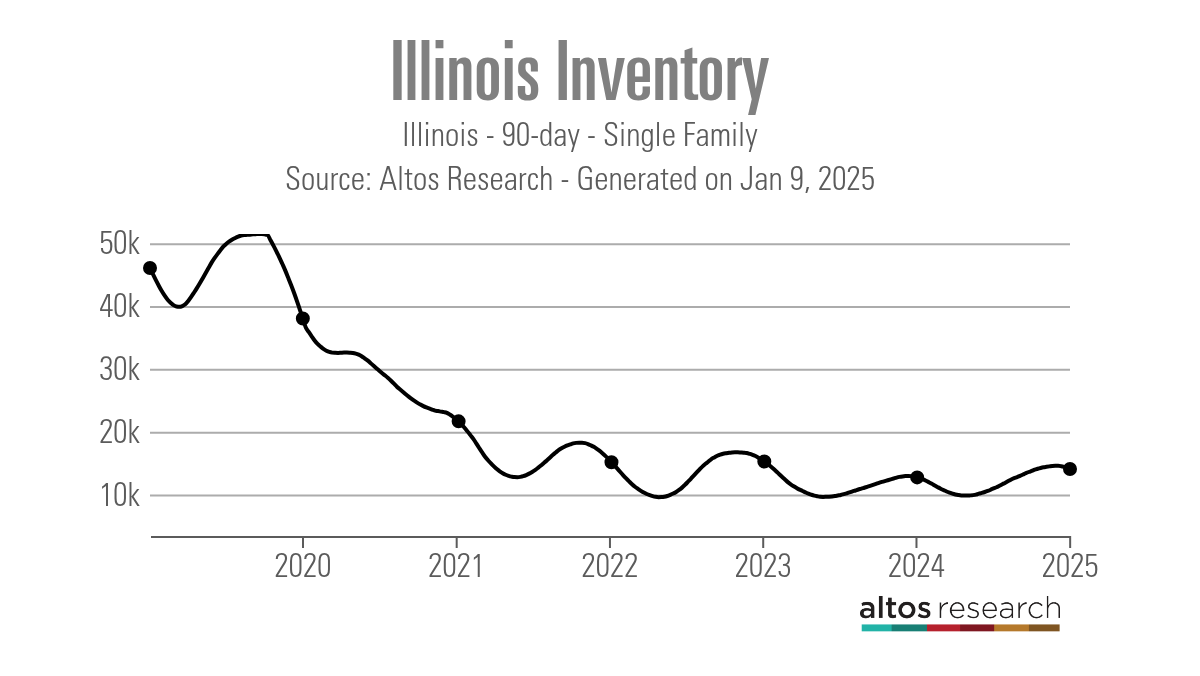Tight inventory is challenging Illinois’ ‘steady Eddie’ housing market

In 2024, more people moved out of Illinois than into the Prairie State. According to the National Movers Study conducted by United Van Lines, 60% of moves in Illinois last year were outbound, which was the second-highest percentage of outbound moves among all states.
The most popular reasons for relocating out of state were family (cited by 25.9% of respondents), jobs (20.7%) and retirement (20.3%). Additionally, the majority of people leaving the state (63.7%) were 55 and older.
Despite the frequency of departures, real estate agents in the state say the housing market remains strong.
“We are still experiencing the multiple-offer phenomenon, although it is not quite as prevalent as it was a year ago,” said Linda Feinstein, a Hinsdale, Illlinois-based agent for Compass. “On the balance, there are still more buyers with their eye on a purchase than there are houses on the market.”
Data from Altos Research supports Feinstein’s observations. Statewide, the housing market has a 90-day average Altos Market Action Index score of 44.18 as of Jan. 6, compared to a score of 44.64 a year ago. Altos considers anything above 30 to be indicative of a seller’s market.

According to Carrie McCormick, a Chicago-based @properties agent, this consistency is pretty common across the state, including in the Windy City.
“If all economic factors, political factors and world events are fine, we just kind of flatline. We don’t have those big highs and lows like Florida or New York,” McCormick said. “Our biggest dip recently, just like the rest of the world, was the pandemic, but otherwise we are just kind of a steady Eddie.”
The typical steadiness of the state’s housing market is reflected in its small annualized home-price growth. The 90-day average median list price currently sits at $309,450, compared to $307,000 a year ago, according to Altos data.
In contrast, during the pandemic, the median-price peak jumped from $279,000 in 2019 to $319,000 in 2021 before falling to $310,000 in 2022.

McCormick said the usual steadiness of the state’s housing market — and Chicago’s relative affordability compared to other large cities — are major draws for many of her clients.
“Chicago is affordable for a big city,” McCormick said. “We also have a good variety of housing here, from townhomes to single families. We also have a lot of architecturally interesting properties, ranging from modern to vintage and historical homes. We just have a lot to offer.”
While the market’s steady conditions certainly give sellers confidence when listing their homes — and ensure buyers know what to expect when entering the market — the current market conditions, including higher mortgage rates, are not what many buyers would define as ideal.
“When rates were low it was a feeding frenzy on every listing, but when rates jumped up to 6%, that held a lot of buyers back for while, especially first-time buyers, because that jump made a huge difference in your payment,” Feinstein said. “But they seem to have started accepting that rates are going to be in the 6% range for a while. I would say there are more buyers out there now than there were pre-pandemic when the rates were lower.”
In order to alleviate some of the pressure on buyers, agents like JD Gieson would love to see more inventory come on the market.
“It really is impacting the number of transactions,” said Gieson, an Oregon, Illinois-based agent for RE/MAX of Rock Valley. “We have quite the shortage of available inventory and there is a surplus of buyers right now, and they just don’t have a lot of options. I have a ton of people who would buy something tomorrow if there was a home available that met their needs.”
As of Jan. 6, the 90-day average number of single-family homes listed for sale in Illinois was 14,049, up from 12,713 listings a year ago. But that was down substantially from the 46,054 listings in early January 2019, according to Altos data.

Agents across the state attribute the ongoing lack of inventory to a rate-lock effect, in which prospective home sellers are holding onto their properties in order to keep the low mortgage rates they secured at the height of the post-pandemic market.
“They don’t want to give up those low rates or even a small remaining mortgage for a 6% rate,” Feinstein said. “They know they would be paying more money for potentially a smaller house, so they just stay where they are. This is especially true of baby boomers who are thinking about downsizing.”
While she agrees that interest rates are contributing to constrained inventory, McCormick sees another factor that is holding back prospective sellers.
“They are also afraid to sell their house because where are they going to? There is no inventory,” McCormick said. “The ones that are moving and giving up their low interest rate are either making sure they can secure their next property before they list their current one or they are moving out of state.”
Despite the challenges they are currently facing, agents in Illinois are optimistic about the spring housing market and confident that the state’s typical steady trend lines will keep things moving along like normal.
“I feel positive,” Gieson said. “I think we will see a market consistent with what we had in ’23 and ’24 — obviously not as strong as we saw in ’21 and early ’22 with interest rates as low as they were. But I feel like rates are going to stay consistent this year and I think consumers are feeling a bit more positive as well, which will give
Recent Posts











GET MORE INFORMATION

